Columbia Magic Mushrooms Store. Psilocybin is the active ingredient in dozens of species of mushrooms, known as magic mushrooms or shrooms, which induce psychedelic experiences featuring euphoria, intensified and distorted senses and feelings, and mild hallucinations. Although still illegal, psilocybin is being investigated for its potential in treating mental health conditions including addiction and depression.
Key takeaways:
- Humans have consumed psilocybin-containing mushrooms for these effects for millennia. In particular, the Mayan and Aztec cultures in Mesoamerica used psychoactive mushrooms in religious ceremonies.
- In 1959, Psilocybin was isolated from the psychedelic mushroom Psilocybe Mexicana by Albert Hofmann, the Swiss chemist who first synthesized LSD.
- Psilocin, its active metabolite, binds to 5HT2A receptors primarily in the prefrontal cortex. These receptors influence mood, imagination, cognition, and perception.
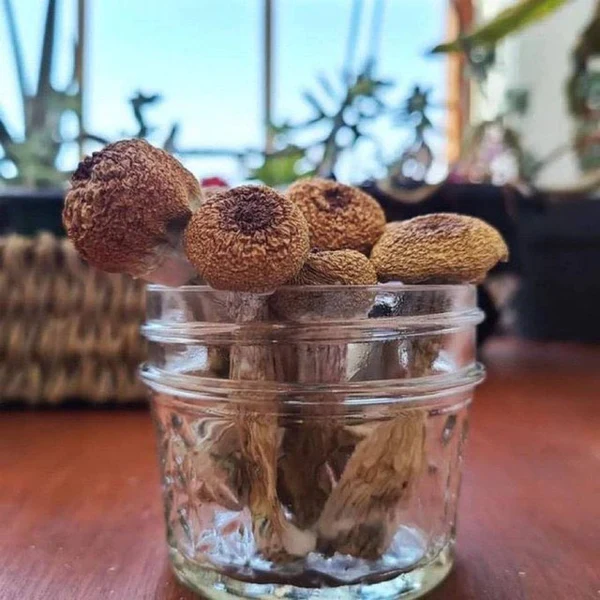
Table of contents:
- What is psilocybin (magic mushrooms)?
- What are the different types of magic mushrooms?
- What is synthetic psilocybin?
- Is psilocybin a controlled substance?
- How do shrooms make you feel?
- What are the side effects of psilocybin?
- How long do magic mushrooms last?
- Is psilocybin dangerous?
- Are magic mushrooms addictive?
- What is psilocybin therapy?
- Common myths about magic mushrooms
- Possible risks of taking magic mushrooms
What is psilocybin (magic mushrooms)? | Columbia Magic Mushrooms Store
Psilocybin is an organic psychoactive compound produced by more than 180 species of mushrooms. When ingested, psilocybin is converted by the body into psilocin, which induces visual and auditory hallucinations and distorts senses and perception of time.[1]
Humans have consumed psilocybin-containing mushrooms for these effects for millennia. In particular, the Mayan and Aztec cultures in Mesoamerica used psychoactive mushrooms in religious ceremonies. In the Aztec language Nahuatl, the mushrooms were known as teonanácatl, or flesh of the gods.[2]
When was psilocybin first synthesized?
In 1959, Psilocybin was isolated from the psychedelic mushroom Psilocybe Mexicana by Albert Hofmann, the Swiss chemist who first synthesized LSD. Pure psilocybin was initially marketed by Hofman’s employer, pharmaceutical company Sandoz, for use in psychotherapy and studied by psychologist Timothy Leary at Harvard.
However, amid concerns about public use and as part of the backlash against the hippie movement, psilocybin, and other psychedelics were made Schedule I controlled drugs in the United States in 1970.
Psilocybin-containing mushrooms continued to be cultivated, picked, and sold on the black market. They’re consumed fresh, or more commonly, in a dried form. Dried magic mushrooms can also be ground into a powder, consumed as is or in capsules.
Other names for psilocybin | Columbia Magic Mushrooms Store
Mushrooms containing psilocybin are popularly known as magic mushrooms or shrooms. They may also be called liberty caps, bottle caps, golden tops, wavy caps, and philosopher’s stones—street names for different species and strains.[3]
Get help during Covid-19
At Recovered, we recognize the impact COVID-19 has had and the continued challenges it poses to getting advice and treatment for substance use disorders. A wealth of information and resources to assist providers, individuals, communities, and states during this difficult time and is ready to help in any way possible.
What are the different types of magic mushrooms?
More than 180 species of psilocybin-containing mushrooms grow in the wild. But most users will encounter just a few:
- Psilocybe cubensis: most magic mushrooms consumed worldwide are strains of “cubes,” which are easily cultivated indoors. They have large, flat golden-brown caps, which turn bluish-violet when bruised due to oxidation of their psilocin content. P. cubensis mushrooms are colloquially called golden halos or golden caps and popular strains are known as Golden Teacher, Penis Envy, and B+.
- Psilocybe semilanceata: these mushrooms, known as liberty caps, witches hats, or pixie caps, are the most widespread naturally-growing psychedelic mushroom, found on meadows and lawns across the northern hemisphere. P. semilanceata fungi are known for their small size and bell-shaped caps. They’re difficult to cultivate indoors but a reasonably common find for foragers.
- Psilocybe cyanescens: known as wavy caps for the shape of their caps, P. cyanescen are particularly potent. They’re difficult to grow indoors but are readily found in the wild, usually in woody debris, and are thought to have spread around the world through the lumber and mulch trade.
- Psilocybin tampanensis: these mushrooms produce underground sclerotia, or truffles, that contain psilocybin and are known as philosopher’s stones or magic truffles.
- Psilocybe mexicana: these were likely the type of mushroom consumed by the Aztec people and the one from which Hofman isolated psilocybin. They still grow in Mexico, where they are known as pajaritos, or little birds, for their small size and potency.
- Psilocybe azurescens: also known as flying saucer mushrooms, P. azurescens are the most potent mushrooms found in the wild, with an estimated three to four times more psilocybin than cubes or liberty caps.[4]
What is synthetic psilocybin? | Columbia Magic Mushrooms Store
Psilocybin can also be synthesized. The inconsistency of the dosage in mushrooms means that synthetic psilocybin is the type used in research trials. Synthetic psilocybin is a white crystalline powder that’s pressed into tablets, put into capsules, or dissolved in water. The powder can also be put into jellies and chocolate to produce psilocybin edibles.
Another research compound, 4-AcO-DMT or psilacetin, is sometimes called synthetic mushrooms or synthetic shrooms. Like psilocybin, it was first synthesized by Hofmann and is thought to break down into psilocin in the body. It produces similar effects to psilocybin.[5]
Is psilocybin a controlled substance?
Under the federal Controlled Substance Act (1970), psilocybin is a Schedule I controlled substance in the United States. It’s therefore illegal to cultivate, distribute, buy, or possess psilocybin-containing mushrooms.
The spores of these mushrooms, which will germinate into mushrooms but themselves don’t contain psychoactive compounds, are explicitly illegal in California, Idaho, and Georgia. In other states, psilocybin spores and grow kits fall within a legal loophole and can be legally bought and sold.
In recent years, some jurisdictions have decriminalized psilocybin-containing mushrooms, opting to remove criminal penalties, usually for the personal and non-commercial use and possession of small quantities.
Personal possession of psilocybin mushrooms, like all illegal drugs, was decriminalized in the state of Oregon in 2021. At the same time, Oregon legalized psilocybin for medicinal use.
Psilocybin has also been decriminalized in the cities of:
- Ann Arbor. Michigan
- Cambridge, Massachusetts
- Denver, Colorado
- Oakland, California
- Santa Cruz California
- Seattle, Washington
- Somerville, Massachusetts
Colorado and California are also moving toward decriminalizing psilocybin. New Jersey is mulling legalizing psilocybin for supervised medical use.[6]
How do shrooms make you feel? | Columbia Magic Mushrooms Store
Like other psychedelic tryptamine compounds such as LSD and DMT, psilocybin closely resembles the neurotransmitter serotonin. Psilocin, its active metabolite, binds to 5HT2A receptors primarily in the prefrontal cortex. These receptors influence mood, imagination, cognition, and perception.
By activating these receptors, psilocybin induces a “trip,” distorting the senses, warping time, creating euphoria, inducing a sense of awe and positive feelings toward other people, and eliciting mild visual hallucinations. This experience typically lasts two to six hours, depending on the dose.
Depending on the dosage, closed-eye hallucinations induced by psilocybin range from bright patterns to immersive dream-like sequences. Open-eye hallucinations distort the user’s environment: projecting patterns, saturating colors, and making objects appear to ripple or “breathe”.
At high doses, psilocybin can cause ego death, an experience in which the person’s sense of self dissolves.
Some people have spiritual and introspective experiences on psilocybin, gaining insights into themselves and the universe that they carry into the future. Other people find psilocybin’s effects frightening and may experience panic attacks or paranoia.
What are the side effects of psilocybin?
In addition to the psychedelic effects, psilocybin can cause:
- dizziness
- unstable blood pressure
- fast heart rate
- elevated body temperature
- headache
- dilated pupils
- lack of coordination
- paranoia
- panic attacks
- psychosis
- drowsiness
- nausea and vomiting (thought to be caused by the mushroom itself and not the psilocybin)[7]
How long do magic mushrooms last? | Columbia Magic Mushrooms Store
A magic mushroom trip begins around 30 minutes after the mushrooms are ingested. The effects usually last four to six hours. However, the intensity and duration depend on what strain and species of mushroom you use and how much you consume.
Some people report an “afterglow” that lasts a few days, during which their mood is improved and they feel closer to others.[8]
Mushrooms are typically excreted from the body within 24 or 48 hours. However, metabolites may be detected for several weeks.
Specialist urine tests may find these mushroom metabolites for up to a week, while metabolites may be detected in hair follicles for up to 90 days.[8] However, these tests are highly specialized and expensive and only performed when there is a strong suspicion someone has consumed mushrooms. Standard panel drug tests administered by employers and law enforcement won’t detect magic mushrooms or psilocybin.
Read here to learn more about how long shrooms stay in your system.
Are magic mushrooms addictive?
Magic mushrooms are not thought to be addictive. Chemical dependence on mushrooms is likely impossible due to the way it acts in the brain.
Psilocybin molecules create hallucinogenic effects by binding to the brain’s serotonin receptors. Unlike drugs such as cocaine and MDMA, they don’t affect the brain’s supply of serotonin and therefore don’t lead to the upregulation or downregulation of neurotransmitters, which is thought to be the basis of chemical dependence and addiction.
Animal studies back this up. When rats are given a lever to push to receive psilocybin, they don’t begin repeatedly pushing it as they do with levers for cocaine, heroin, or alcohol.
The body also develops psilocybin tolerance very rapidly. After just three days of successive dosing, the effects of psilocybin will be very muted, further mitigating addiction.[13]
Additionally, the highs of magic mushrooms are so intense and psychically unsettling that most people feel compelled to take them only occasionally.
Related: How much do shrooms cost?
Psilocybin in addiction treatment
Psilocybin has been investigated for its potential to cure addiction to alcohol, nicotine, and other drugs. It’s thought to work by dialing down activity in the brain’s default mode network, which is involved in introspection, ingrained thoughts and behaviors, and our sense of self and is overactive in cases of addiction and depression. By turning down activity in the default mode network, psilocybin and other psychedelics allow people to break these harmful neural patterns.[14]
However, some people may develop a psychological dependence on psilocybin or use mushrooms as part of a wider addiction to mind-altering substances.
What is psilocybin therapy? | Columbia Magic Mushrooms Store
Psilocybin was used to assist psychotherapy in the early 1960s before research into psychedelics was shut down by new drug laws.
Over the last decade, interest in psychedelics has been revived as researchers seek novel drugs for often intractable mental health conditions. Psilocybin’s low potential for adverse effects and comparatively short-lived effects (three to six hours versus LSD’s six to 12) make it a good candidate for therapeutic use.
Already, psilocybin therapy has shown promise for ameliorating depression, anxiety, anorexia, PTSD, OCD, and alcohol and nicotine addiction. In one study, people with treatment-resistant depression received two doses of psilocybin alongside supportive psychotherapy.
They reported rapid and substantial reductions in depressive symptoms, with most subjects seeing improvement and half achieving remission during the four-week follow-up.[15] In another study, people with alcohol use disorder reported significantly fewer heavy drinking days than controls after receiving two doses of psilocybin.[16]
Psilocybin is thought to improve depression and addiction by turning down activity in the brain’s default mode network and promoting neuroplasticity, allowing the brain to break destructive neural circuits and rewrite new ones. This means the effects may last for months after a dose.
Psilocybin has also shown promise in treating migraines and cluster headaches.[17]
Common myths about magic mushrooms
The 1970s backlash against psychedelics foreclosed research into magic mushrooms and shrouded them in frightening urban legends, about permanent psychosis, violence, and one unfortunate man who started believing he was orange juice.
Today, science is debunking much of this lore.
Magic mushrooms cause psychosis
Psilocybin is now thought to be very safe for most people. In the King’s College London study of psilocybin, subjects reported no lasting effects on their thinking or emotions. However, people with existing mental health conditions including schizophrenia or bipolar disorder, or family histories of them may experience an onset or worsening of symptoms and should avoid psychedelics.
Magic mushrooms are addictive
All evidence suggests that magic mushrooms cannot cause addiction because they rapidly produce tolerance and don’t up- or downregulate receptors in the brain. Instead, they may be a powerful treatment for addiction.
Magic mushrooms make people behave dangerously or irrationally
In some urban legends, people under the influence of magic mushrooms pose a danger to themselves and others. In reality, these outcomes are very rare and are usually caused by people taking mushrooms in unsafe places, such as on cliff edges. There are no reports of magic mushrooms causing people to be violent to others.
Possible risks of taking magic mushrooms | Columbia Magic Mushrooms Store
Although magic mushrooms are thought to be among the safest illicit drugs, they can pose risks when they’re taken without proper caution.
Risks include:
-
 DRIED AMANITA MUSCARIAPrice range: $210.00 through $1,250.00
DRIED AMANITA MUSCARIAPrice range: $210.00 through $1,250.00 -
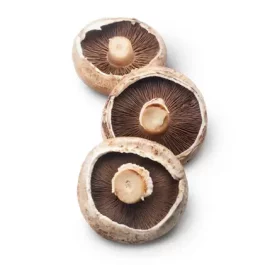 Portobello Mushroom (Agaricus bisporus)Price range: $210.00 through $1,250.00
Portobello Mushroom (Agaricus bisporus)Price range: $210.00 through $1,250.00 -
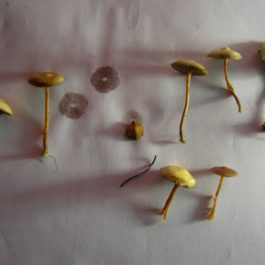 Psilocybe StuntziiPrice range: $210.00 through $1,250.00
Psilocybe StuntziiPrice range: $210.00 through $1,250.00 -
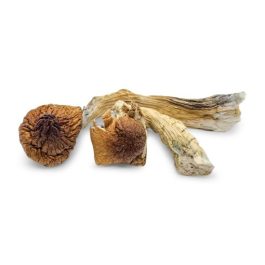 Tidal Wave Magic MushroomsPrice range: $210.00 through $1,250.00
Tidal Wave Magic MushroomsPrice range: $210.00 through $1,250.00 -
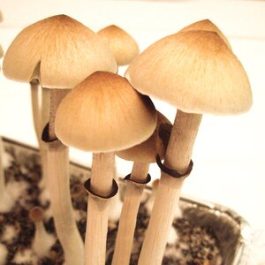 hawaiian magic mushroomsPrice range: $210.00 through $1,250.00
hawaiian magic mushroomsPrice range: $210.00 through $1,250.00 -
 Golden Teacher ShroomsPrice range: $210.00 through $1,250.00
Golden Teacher ShroomsPrice range: $210.00 through $1,250.00 -
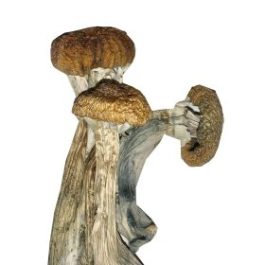 Ecuador MushroomsPrice range: $210.00 through $1,250.00
Ecuador MushroomsPrice range: $210.00 through $1,250.00 -
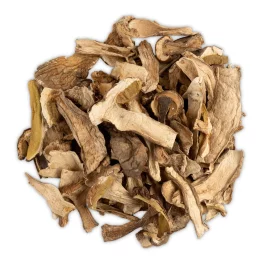 Porcini MushroomsPrice range: $210.00 through $1,250.00
Porcini MushroomsPrice range: $210.00 through $1,250.00 -
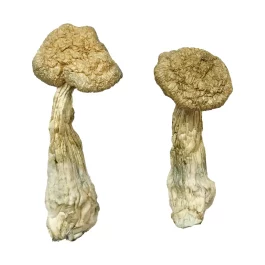 Burma Magic MushroomsPrice range: $210.00 through $1,250.00
Burma Magic MushroomsPrice range: $210.00 through $1,250.00
- Bad trips: some people react with fear, panic, and paranoia to psilocybin’s effects. You can mitigate the risk of a bad trip by only taking psilocybin when in a good state of mind, in a comfortable environment without any overwhelming sensory input, and under the supervision of a sober “sitter.”
- Worsening of certain mental health conditions: although psilocybin won’t cause psychosis in people who aren’t predisposed to it, psychedelics can aggravate symptoms of schizophrenia and bipolar disorder in people who are. Bad trips may worsen anxiety and panic attacks.
- Picking the wrong mushrooms: psilocybin mushrooms aren’t poisonous to humans. But inexperienced foragers may pick mushrooms that are and can cause liver damage and death.
- Hallucinogen persisting perception disorder (HPPD): a fraction of people may experience lasting visual hallucinations or distorted perception after using psilocybin or other psychedelics.
- Adulterants: powder that’s sold as magic mushrooms may be cut with other riskier drugs such as PCP, which may leave unsuspecting users at risk of overdose or a bad reaction.
